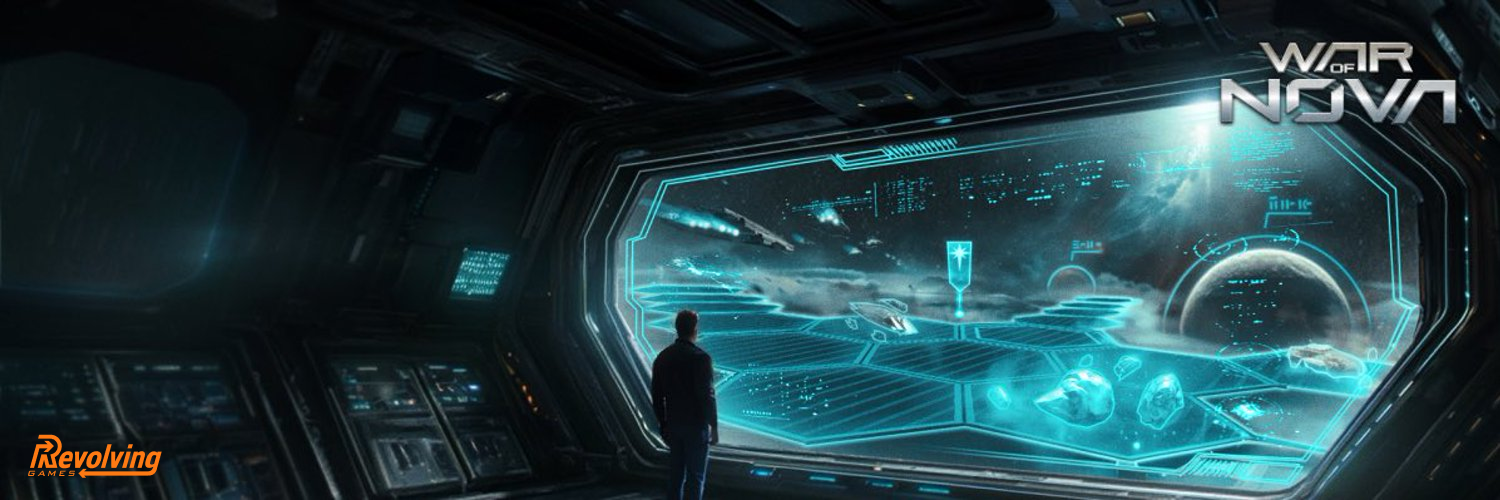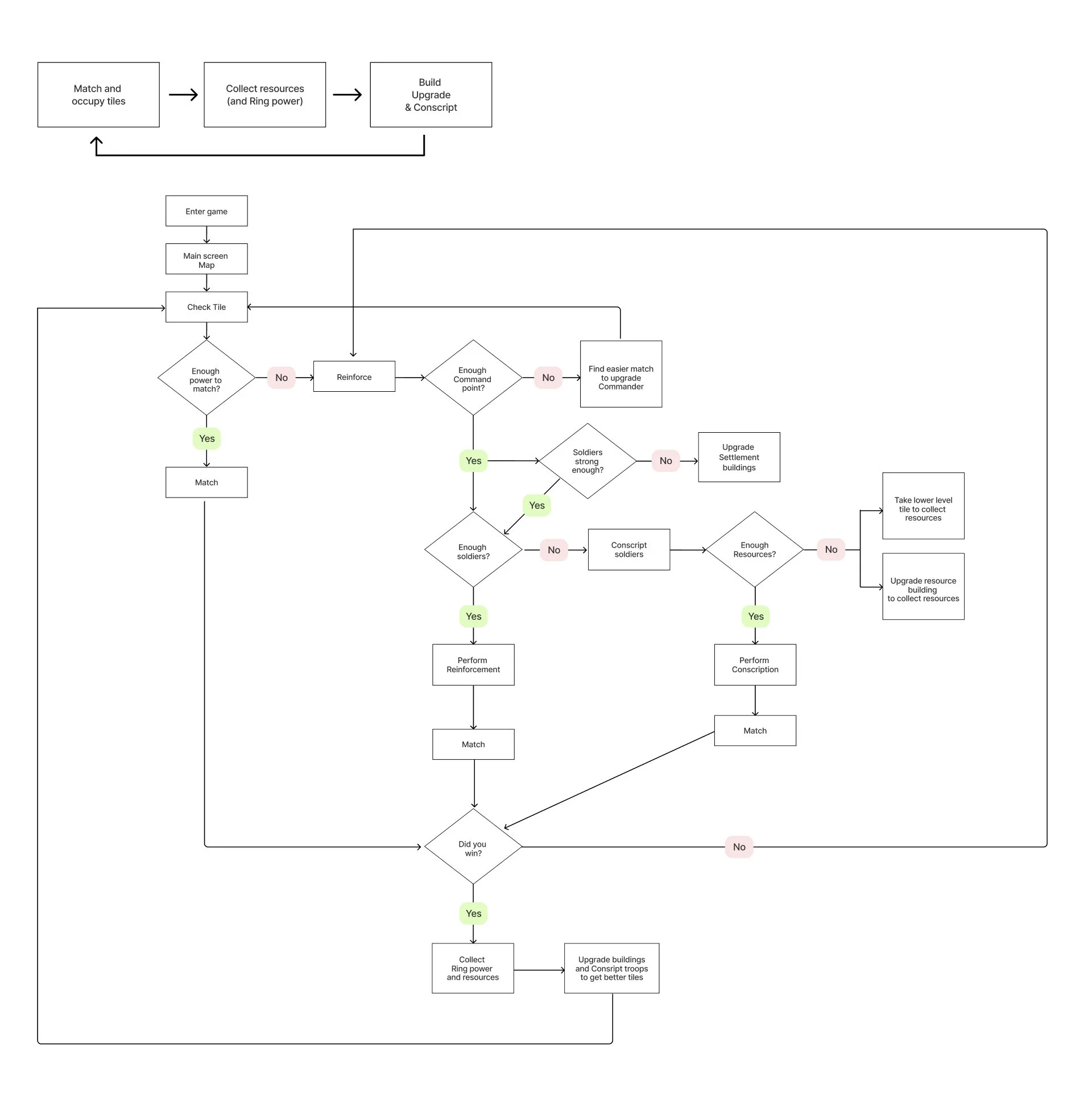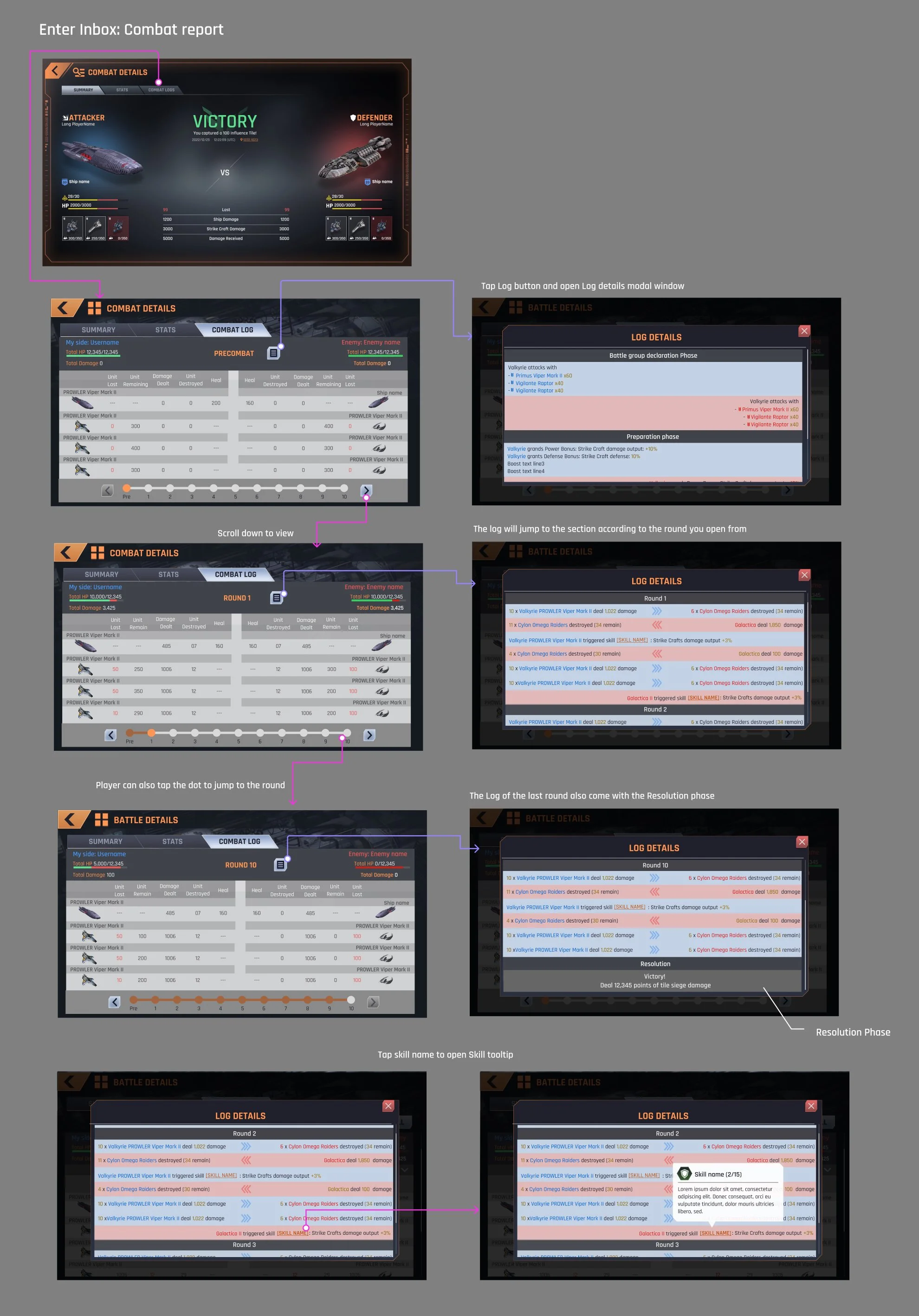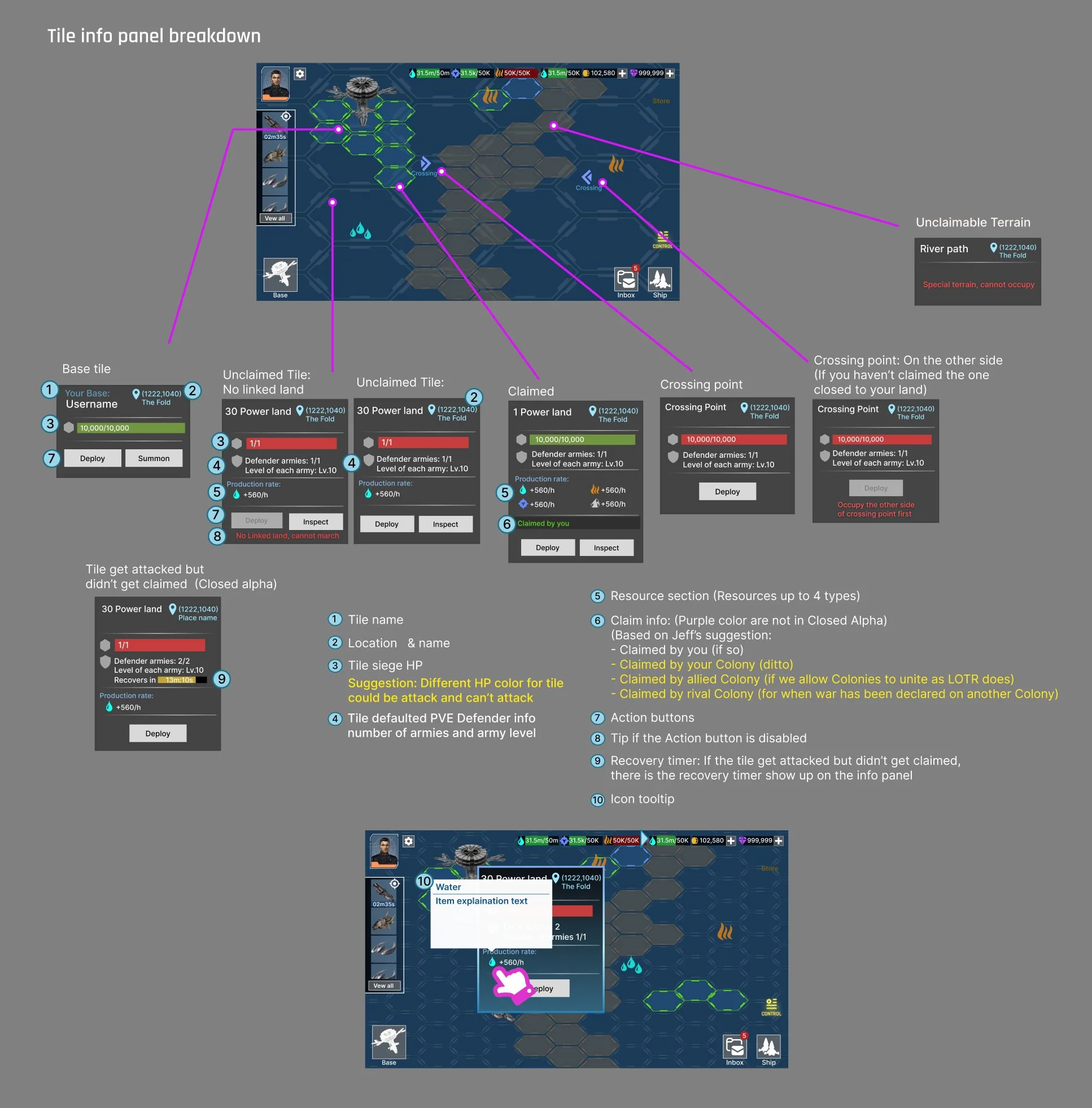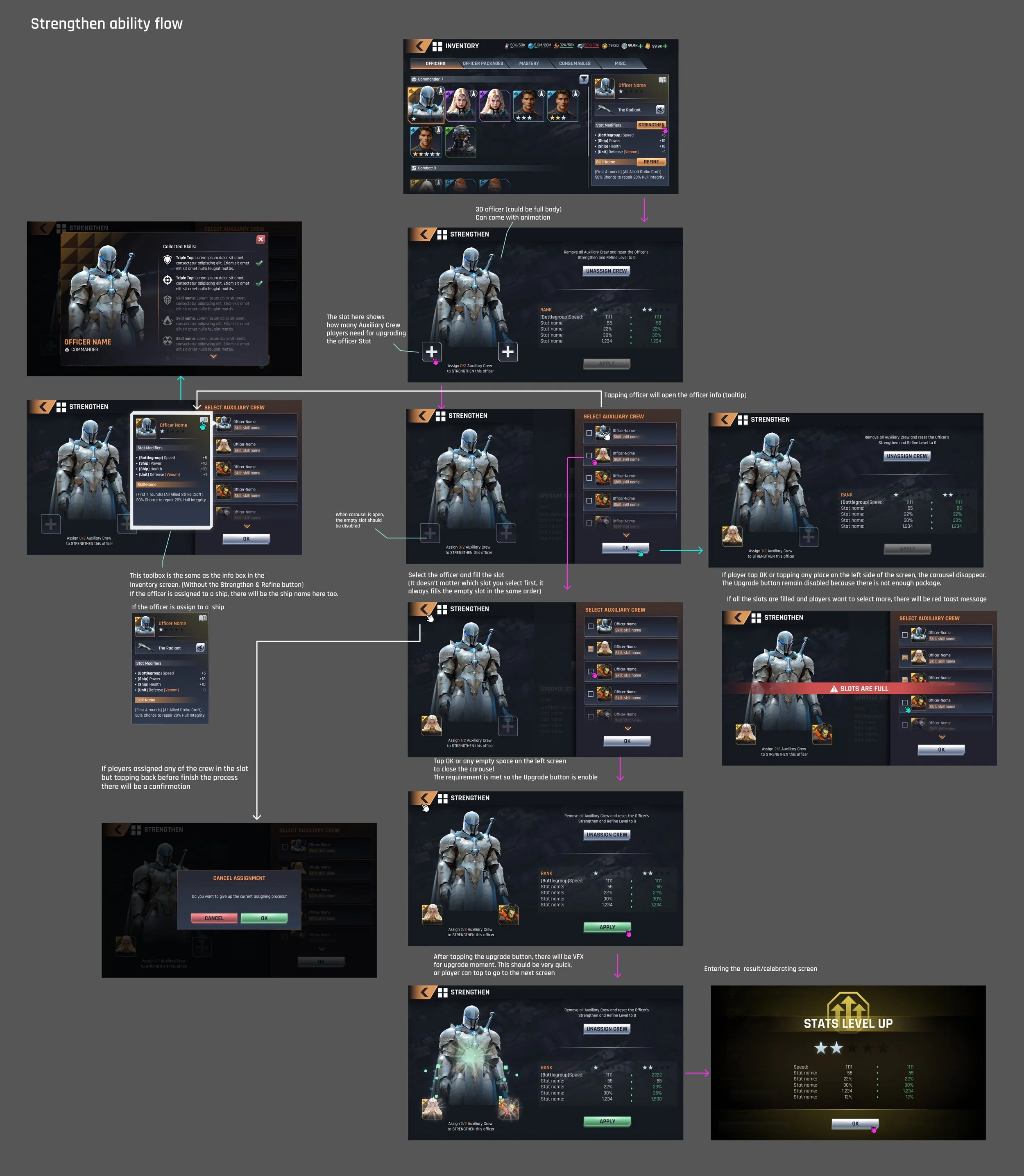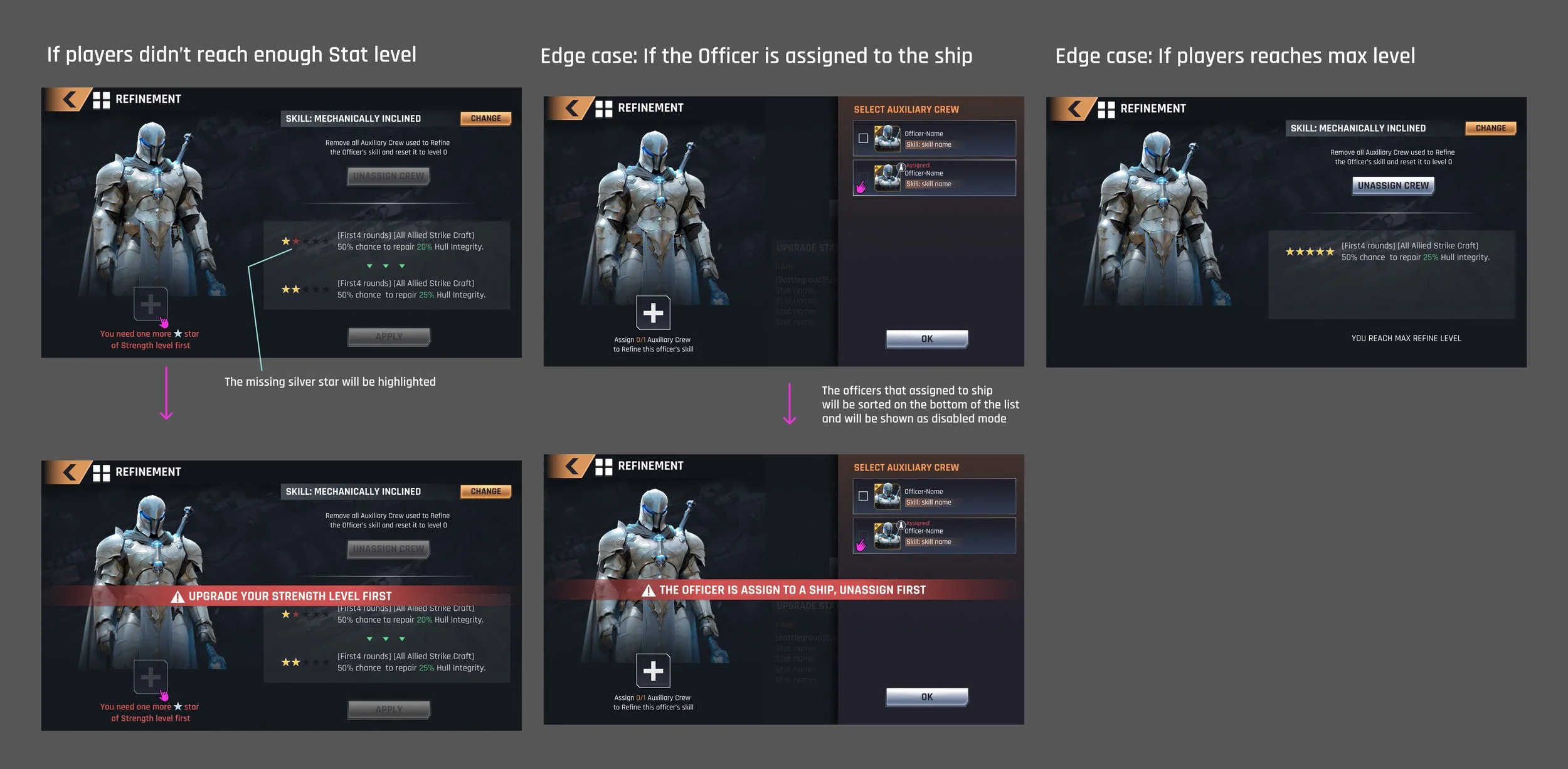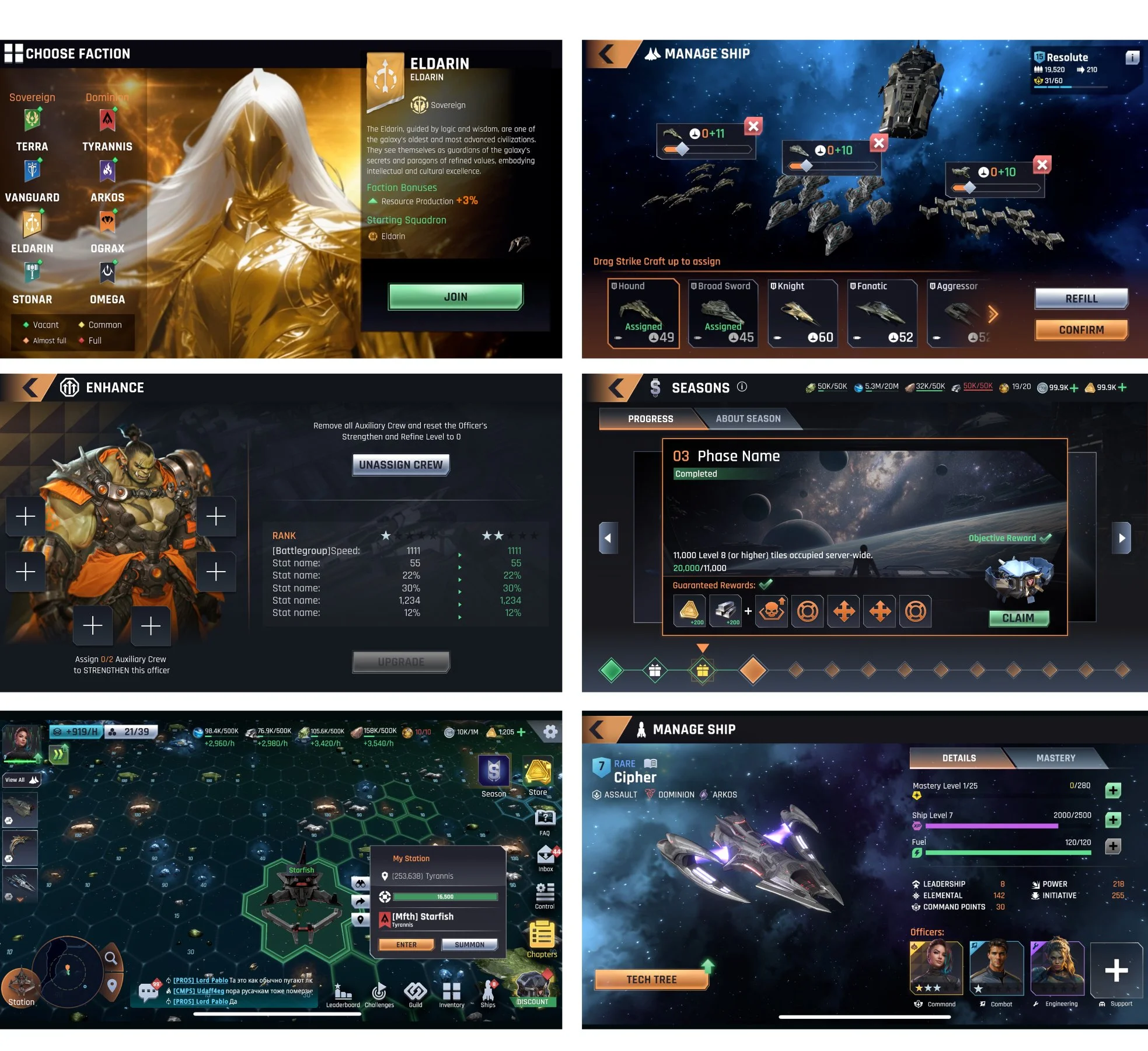War of Nova
Launched in 2025 (iOS/Android)
War of Nova is a sci-fi 4X strategy game set in a vast galactic universe. Players expand their empires, manage resources, and engage in large-scale real-time battles to compete for galactic dominance. Developed by Revolving Games, the project combines deep strategy, immersive world-building, and fast-paced tactical gameplay.
Overview:
Senior UX designer
Led the UX direction of a complex strategy game by identifying player needs and guiding the team to design user-centered solutions.
Collaborated cross-functionally with designers, art directors, and engineers to align design ideas, creative visions, and technical goals.
Created wireframes, prototypes, and user flows to align stakeholders and ensure clarity in design direction.
My role:
During the development of War of Nova, I encountered several major UX challenges:
Platform Shift: The game was initially designed for PC, and much of the early UX work followed PC-first principles. However, due to marketing decisions, the project later pivoted to mobile. I collaborated closely with UI artists to redesign the layout and interface, ensuring it aligned with mobile players’ habits and expectations.
Complex Systems vs. Mobile Constraints: To engage hardcore players, designers wanted to add depth with systems that involved heavy calculations and strategic planning. While this provided rich gameplay, it also introduced the challenge of fitting a large amount of information and functions onto a small mobile screen. My UX focus was on presenting complex information clearly while still making the gameplay approachable for casual and mid-core players.
Bridging Designers and Engineers: Some features were highly complex and led to numerous scenarios and edge cases. As the UX designer, I act as a bridge between designers and engineers — transforming game design concepts into clear user flows, mapping out potential scenarios, and ensuring engineers could quickly understand and implement the features effectively.
Challenge:
After each feature was completed, we conducted internal user testing by inviting colleagues who had never played the game before. Their fresh perspectives provided valuable feedback for usability and clarity.
In the early stages of development, I created interactive prototypes to enable quick playtesting without consuming too many engineering resources. Later, due to time constraints, we had to skip this step. Instead, I produced highly detailed wireframes and user flows, breaking down every step, listing all the scenarios and possible edge cases. This ensured that engineers could clearly understand the system, and it also helped the development team identify potential design issues before investing too much engineering time. This approach allowed the team to move forward more efficiently.
I also worked closely with the UI artists to iterate quickly based on feedback, making adjustments to information hierarchy, layout, and interactions until the experience felt both intuitive and engaging.
Solutions:
Competitive Analysis
Before diving into detailed planning, I always conduct competitive research and analysis for each feature. I study the pain points, explore why certain UX approaches work or fail, and understand what players like or dislike. From there, I identify opportunities to improve and create a better experience for our game.
Core Loop Logic Flow Map (Early development phase)
Early stage Low-fidelity wireframes
High-fidelity wireframes: The following images display the high-fidelity wireframes and user flow of the Strengthen Ability feature, accompanied by a detailed list of potential edge cases.
Edge cases
Game trailer & screenshots :
© The intellectual property rights are fully owned and reserved by Revolving Games
